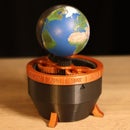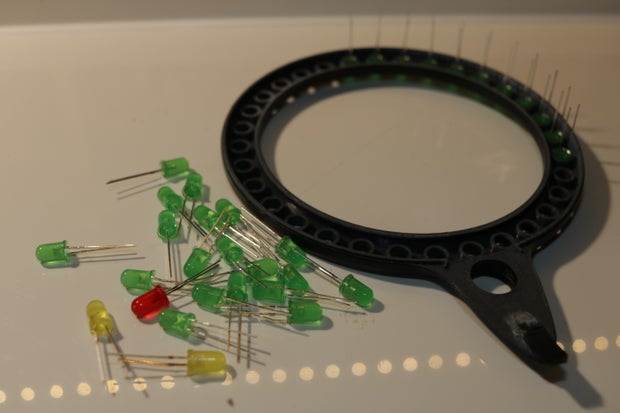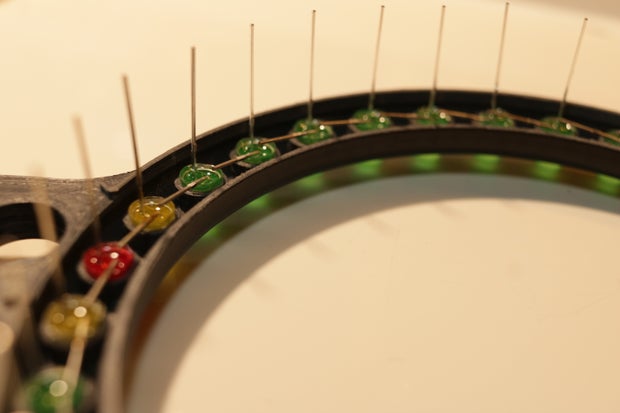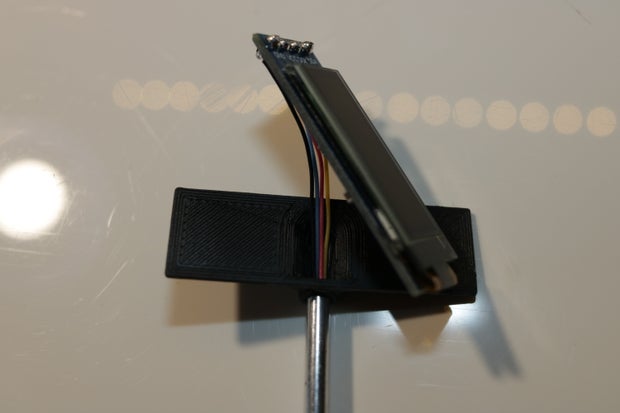Introduction: Arduino Cyclone Game
I have never played the real cyclone arcade game but I like the idea to play with our reaction time.
I designed a miniaturized game. It consists in 32 LEDs forming a circle, the LEDs lights up one by one as a led chaser. The goal is to press a button when the red LED lights up.
Supplies
- 29x green led
- 2x yellow led
- 1x red led
- 1x 12mm led push button
- 4x 74HC595
- 1x Arduino nano
- Ø3mm tube 46mm long
- 1x I2C OLDE display 128*32
- Wires
- 3D printer
- primer + paint
- sand paper
- soldering iron
- Mini USB cable + USB power source
Step 1: Rules
I added to this game its own score rules as well as speed changes to make it more challenging,
-if you stop on the red led : the score increases by a value between 4 and 20 depending on the speed. The speed increases by 2%.
-if you stop on a yellow led : the score increases by 2 and the speed increases by 10%
-if you stop on a green led : game over 
I also added a bonus for really skilled players !
-if you stop on the red led 3 times in a row while the speed is above 80% : the speed returns to 20% ! (stars indicate the progression of that bonus)
the first LED to lights up is chosen randomly by the arduino as well as if it turns clockwise or counterclockwise.
Step 2: Prototyping
That was the step where I tested all kinds of scoring rules. The arduino nano board does not have enough output pins to drive 32 LEDs so I used four 74HC595 chips, each one driving 8 Leds, those are working really well and it uses only 3 arduino output pins !
I made this circuit diagram: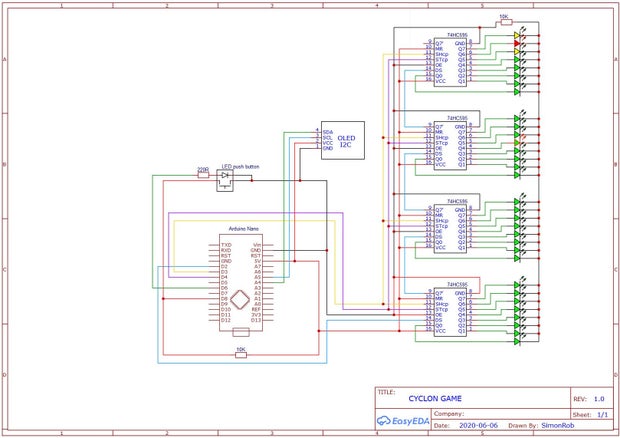
and here is the arduino code (you will need this library for the oled display and this library for the hc595 chips)
Attachments
Step 3: The Enclosure
Designing:
The enclosure has been designed in Fusion 360, it is composed of 4 parts.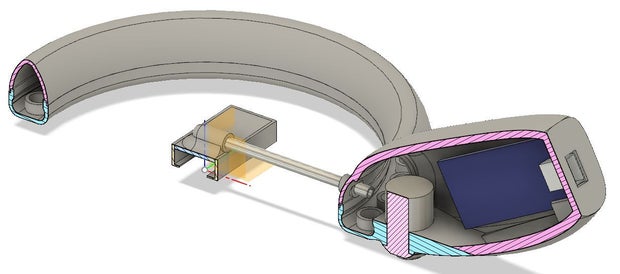
You can find the .STL and .f3d files on Cults3D HERE
3D Printing:
The upper body will require supports to print. I printed all the parts using PLA ice filament with default settings on Cura, and 3D printed on a Creality Ender3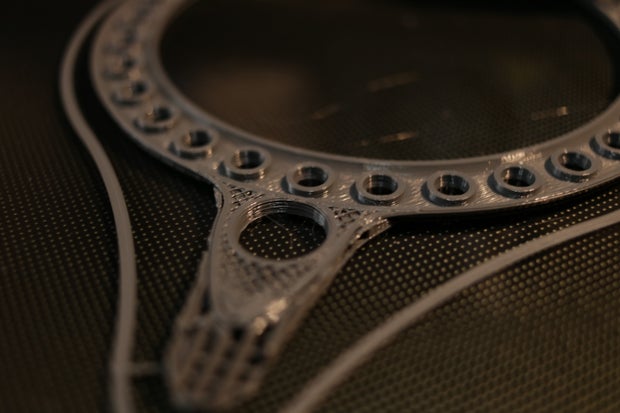
Post-Printing:
For this project I wanted to try a finishing technique for 3D printing.
here is what the 3D print looks like ...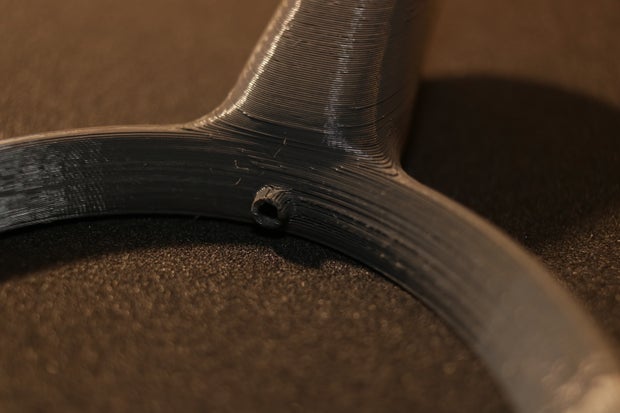
I first sanded the pieces with 120 to 800 grit sandpaper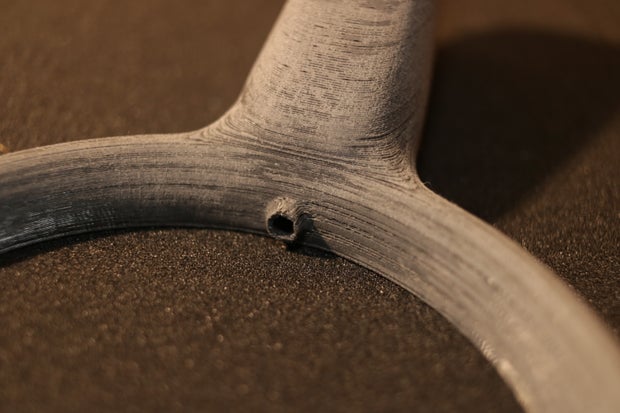
I applied a primer coat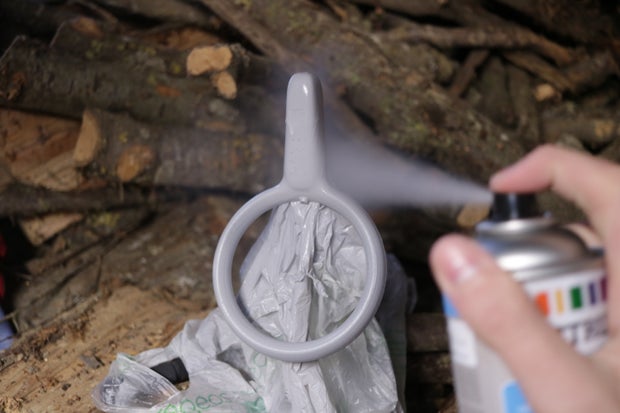
I sanded it again with 800 grit sandpaper
Then I added 3 coats of black spray paint
here you have the "before and after" comparaison :


Step 4: Assembly
- place the 32 LEDs in the holes of the upper body (negative inside, positive outside)

- bend the negative legs in order to solder them together

- place the first 74HC595 here upside down and solder the LEDs according to the diagram on step 2

- link the four chips with really thin wires also according to the circuit diagram.

- solder four wires to the OLED display and pass those through the tube like that:

- solder all the wires to the Arduino.

- glue the arduino board in place with hot glue.
- clip the upper body on the lower body and clip the front oled box.
Step 5: Have Fun!
Now, you just have to plug the arduino to a 5V power source (power bank, laptop,...)
then it will start by itself.
Try to make the highest score !
Mine is 1152 good luck!


Participated in the
Toys and Games Challenge




